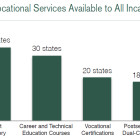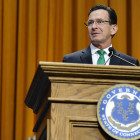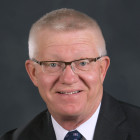
Report: Incarcerated Youth Often Get Inadequate Education
|
States should do more to ensure quality education for incarcerated youth, says a new report based on a 50-state survey.
Juvenile Justice Information Exchange (https://jjie.org/page/199/)

In late September, Torri was driving down the highway with her 11-year-old son Junior in the back seat when her phone started ringing.
It was the Hamilton County Sheriff’s deputy who worked at Junior’s middle school in Chattanooga, Tennessee. Deputy Arthur Richardson asked Torri where she was. She told him she was on the way to a family birthday dinner at LongHorn Steakhouse.
“He said, ‘Is Junior with you?’” Torri recalled.
Earlier that day, Junior had been accused by other students of making a threat against the school. When Torri had come to pick him up, she’d spoken with Richardson and with administrators, who’d told her he was allowed to return to class the next day. The principal had said she would carry out an investigation then. ProPublica and WPLN are using a nickname for Junior and not including Torri’s last name at the family’s request, to prevent him from being identifiable.
When Richardson called her in the car, Torri immediately felt uneasy. He didn’t say much before hanging up, and she thought about turning around to go home. But she kept driving. When they walked into the restaurant, Torri watched as Junior happily greeted his family.
Soon her phone rang again. It was the deputy. He said he was outside in the strip mall’s parking lot and needed to talk to Junior. Torri called Junior’s stepdad, Kevin Boyer, for extra support, putting him on speaker as she went outside to talk to Richardson. She left Junior with the family, wanting to protect her son for as long as she could ...

States should do more to ensure quality education for incarcerated youth, says a new report based on a 50-state survey.

Juvenile justice systems have an unprecedented opportunity to utilize advances in knowledge about adolescent development and protecting public safety. The evolution of positive youth development (PYD) approaches and the heightened investment in risk and needs assessments are a prime example.

Hurt. Frustration. Grief. Anger. Guilt. Three sisters and one brother reflect on their dead siblings' drug addictions.

A ballroom full of lawmakers, academics and criminal justice reform advocates, with a sprinkling of state and local officials, gathered to mark the one-year anniversary of the passage of California's Prop. 47 and to hear what's next.

We know that young offenders are different from adults and that incarcerating them perpetuates cycles of trauma and inequality that do us all more harm than good.

The program, in place at more than 200 Philadelphia schools since 2014, is an alternative to the zero tolerance approach to school safety that has resulted in more arrests but not a decrease in behavioral incidents.

Connecticut Gov. Dannel P. Malloy today said the state should consider treating young offenders as juveniles until they are 21 years old, a cutting-edge reform proposal.

School Resource Officers need to learn de-escalation techniques, crisis intervention and how to use their most effective tool — talking.